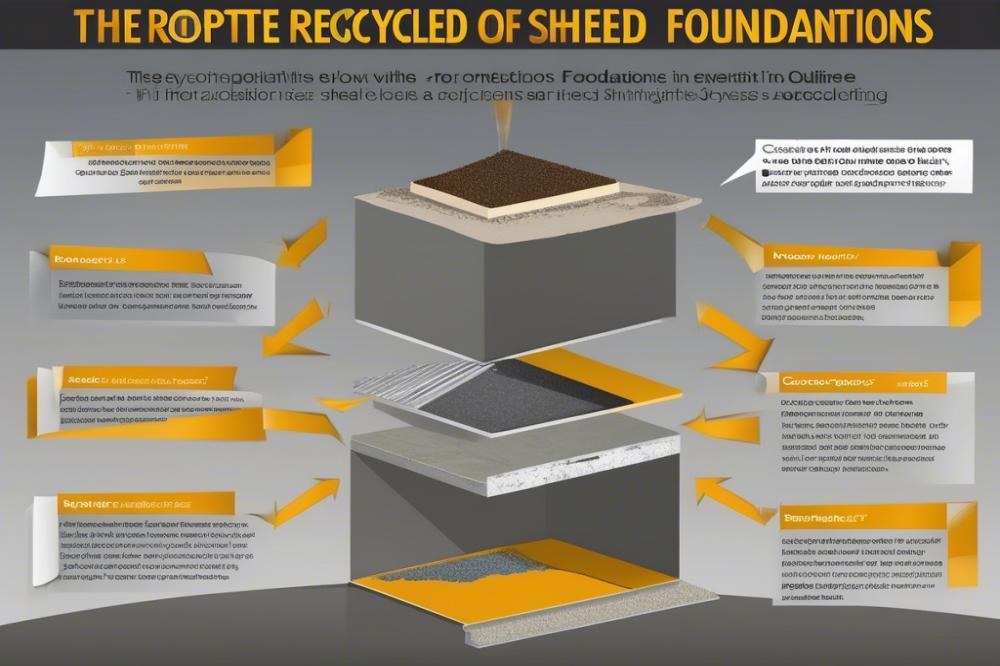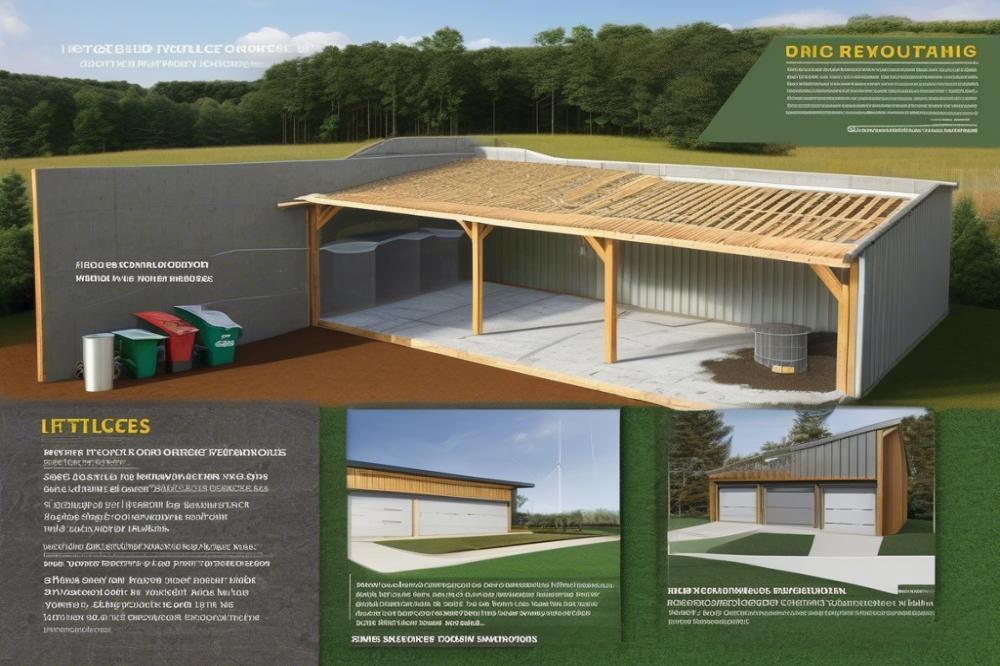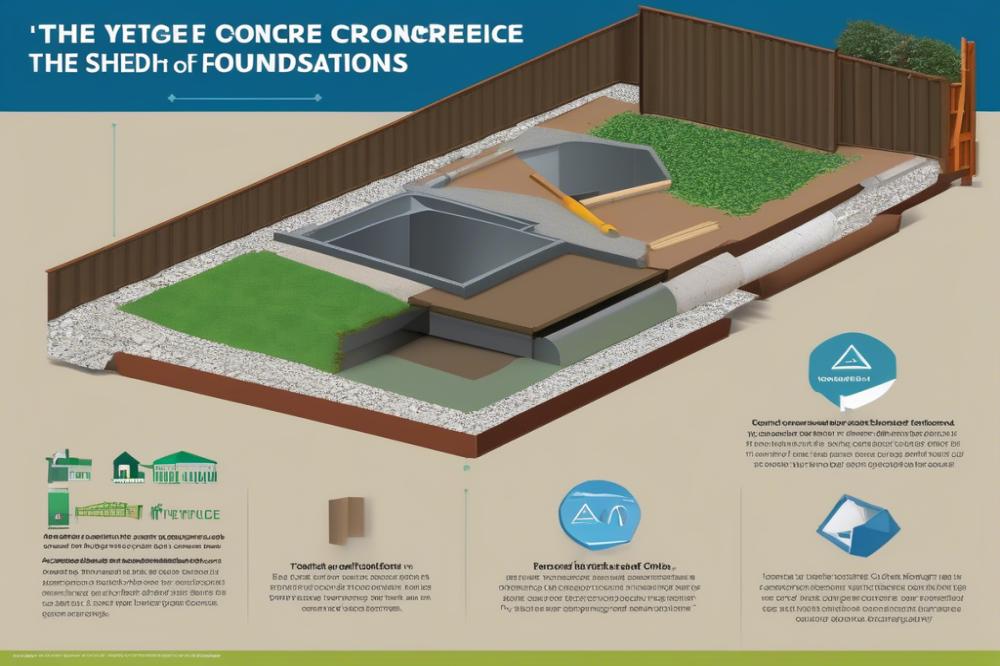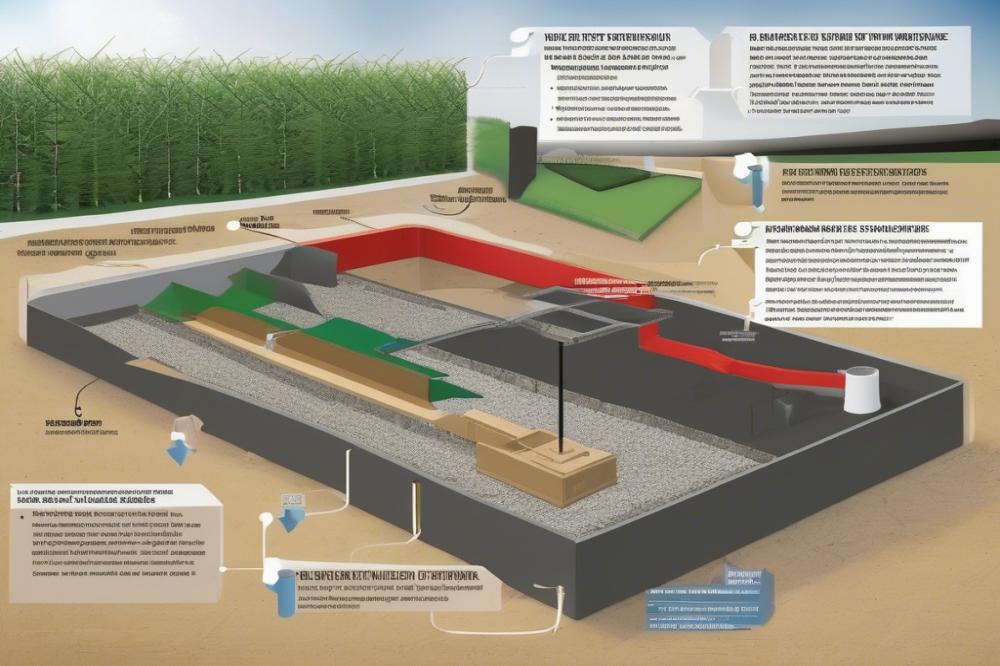The Role of recycled concrete in shed foundations
recycled concrete is making waves in the world of construction materials. As society faces increasing pressure to live sustainably, many builders are turning to eco-friendly alternatives. Keeping our environment in mind, concrete recycling offers a way to reduce waste and lower costs, all while maintaining essential qualities needed for strong building foundations.
Foundations for sheds may seem simple, yet they play a crucial role in the overall stability of these structures. Adequate support is needed to withstand weather challenges and the test of time. Using sustainable methods in shed construction not only enhances structural integrity but also reflects a commitment to protecting our planet. This shift toward green practices has become increasingly significant as awareness of environmental impact grows.
The construction industry is gradually embracing sustainable practices. Builders are increasingly realizing that incorporating recycled materials can minimize waste that often ends up in landfills. This trend towards eco-friendliness isn’t merely a trend; it marks a pivotal change in how we think about constructing and maintaining buildings. Cost-effective solutions, such as using recycled concrete, help reduce expenses without compromising on durability.
As homeowners explore options for their outdoor structures, it’s essential to consider how these choices can affect the environment. Choosing materials that support sustainability not only benefits individual projects but contributes to a larger movement toward greener living. Ultimately, the use of recycled materials in construction represents a vital step in reducing our ecological footprint.
Understanding Recycled Concrete

Recycled concrete is made from old concrete that is crushed and repurposed. The process of concrete recycling involves breaking down leftover construction materials into smaller pieces. Various methods exist for this, including mechanical crushing. These methods create a new kind of construction material that can be reused in various projects.
Sources of recycled concrete often come from demolished buildings, roads, and bridges. Construction sites provide a significant amount of waste that can be converted into useful materials. Not only does this approach minimize the volume of debris sent to landfills, but it also creates a valuable resource for builders. Common applications for recycled concrete include road bases, drainage systems, and, quite importantly, shed foundations.
Using recycled material in building foundations has several advantages. First, it significantly promotes sustainability in the construction industry. This eco-friendly practice reduces the need for new raw materials. It also lowers the environmental impact associated with mining and transporting traditional construction materials. Recycled concrete can offer similar durability and strength to its virgin counterparts.
Cost-effectiveness is another significant benefit. Builders can often save money by using materials derived from concrete recycling. Since many shed foundations do not require the highest-grade materials, this option can suit budget-conscious projects very well. Structural integrity remains intact when the right quality control measures are in place. Thus, many contractors are turning to recycled materials for their building projects with confidence.
Overall, the adoption of this alternative material supports a more sustainable approach to construction. It’s not just about minimizing waste; it’s about creating a better future. Using recycled concrete aligns well with modern environmental goals while providing solid performance in essential applications like shed foundations.
Sustainability and Environmental Impact

Construction materials often have a significant environmental impact. Traditional building practices rely heavily on new resources, leading to an increase in waste. This is evident when looking at landfills. Many construction projects generate tons of debris, much of which ends up in these waste sites. The process of extracting natural resources for new materials also contributes to environmental degradation. From mining to processing, these activities can be harmful to ecosystems.
On the other hand, using recycled materials can reduce waste sent to landfills. When concrete is recycled, it saves space and minimizes the need for fresh resources. By doing this, we conserve natural materials and energy. Concrete recycling involves breaking down old concrete and repurposing it for new uses. As a result, it decreases the volume of waste in landfills, promoting sustainability within the construction industry.
Choosing sustainable materials for shed foundations provides multiple benefits. Such materials often offer durability, which is essential for any structure. Not only do they perform well, but they also contribute to eco-friendly practices. When sustainable options are selected, the overall environmental impact of a project can be greatly reduced. Additionally, these solutions can be cost-effective in the long run, making them attractive to builders and homeowners alike.
Using recycled materials in construction supports a shift towards greener methods. It helps to align building projects with modern eco-friendly values. These practices emphasize the importance of maintaining structural integrity while reducing waste. As people become more aware of the impact of their choices, the demand for sustainable options in construction grows. Every step taken towards recycling can lead to a more sustainable future.
Structural Integrity and Durability

Recycled concrete has emerged as a viable option for shed foundations. Its structural integrity can rival that of traditional concrete when mixed and cured properly. Builders often find that using recycled materials reduces the overall cost of construction. However, questions about its long-term performance often arise.
Durability is crucial for any building foundation. Studies indicate that recycled concrete can withstand similar stresses as its conventional counterpart. Factors such as the quality of the original material, the recycling process, and the mix design play pivotal roles in this assessment. When comparing these two construction materials, it is essential to note that recycled concrete may sometimes require specific treatments to enhance its strength.
Environmental impact cannot be neglected. Utilizing recycled materials lessens the burden on landfills and promotes sustainability. This eco-friendly approach leads to a reduction in the demand for new raw materials. In turn, this contributes to lesser carbon emissions associated with concrete production.
Several variables affect the performance of recycled concrete in foundations. For instance, moisture content during mixing can significantly influence the final product. Each batch may vary, leading to inconsistencies. It’s important for builders to be aware of these differences to achieve the desired results.
Understanding how recycled material behaves under various conditions is beneficial. Tests often reveal that, under certain circumstances, it can develop strength over time as it absorbs moisture. This characteristic can enhance the durability of future structures. In short, careful consideration of these components ensures effective use of recycled concrete in building foundations.
Cost-Effectiveness and Accessibility

Using recycled concrete for shed foundations offers a cost-effective alternative to traditional construction materials. Builders often look for ways to keep projects within budget, and this option provides that. Overall, it can reduce expenses significantly without sacrificing quality.
The process of concrete recycling involves breaking down old concrete and turning it into reusable materials. These materials maintain structural integrity comparable to fresh concrete. Not only is this eco-friendly, but it also helps lower the environmental impact of construction. It reduces the amount of waste sent to landfills, which is a growing concern in today’s world.
Availability of recycled concrete continues to improve as more companies recognize its value. Many suppliers now offer this material adjoined with the assurance of quality. Homeowners and DIY enthusiasts can also find it at local construction material stores. Accessibility has become less of a hurdle as the market evolves.
Durability is another strong point. Builders find that recycled materials perform well, ensuring the longevity of shed foundations. When a project employs high-quality components, it results in a safe and stable structure. Such factors make this option even more appealing.
Additionally, the demand for sustainable building practices is on the rise. This shift encourages more companies to provide eco-friendly solutions, which in turn, supports the market for reused materials. As a result, builders and the community might benefit from lower overall costs and quality foundations.
In the end, using reclaimed materials can transform how we approach construction. The benefits are not just limited to cost savings. Communities gain from reduced waste, and individuals can feel proud of their choice to support environmentally friendly practices. Each decision impacts not just immediate projects but also the broader focus on sustainability in construction.
Best Practices for Using Recycled Concrete in Shed Foundations
Using recycled concrete can be a sustainable choice for building foundations. When integrating this material into shed construction, specific guidelines can help maximize its benefits while minimizing potential issues. Start by evaluating the quality of the concrete. Ensure that it is free from contaminants like metal or wood. A clean source will contribute to better durability.
Next, consider the size and grading of the material. Larger pieces may not compact well and could lead to uneven settling. Therefore, using smaller aggregate sizes often works best. This approach helps maintain structural integrity. Mixing the recycled material with fresh aggregate can also improve performance. It combines the benefits of both, giving a balance that enhances strength.
Installation Tips
Proper installation is key to a stable foundation. Before laying the base, prepare the ground carefully. Clear any debris or vegetation and level the area. That allows the concrete to lay properly and reduces the risk of cracking. Also, monitor moisture levels. Too much water in the mix can weaken the foundation over time.
Using reinforcement, like steel rebar or wire mesh, adds extra strength. This reinforcement is especially important when working with less uniform materials. After pouring, allow the concrete to cure adequately. This step promotes durability and resistance to environmental impact.
Challenges and Solutions
While using this eco-friendly option offers benefits, challenges can arise. Some may worry about the long-term performance of recycled materials. Knowing how to address these concerns can be helpful. Conducting tests before installation can provide insights into the material’s properties. Simple compressive strength tests will reveal if the material meets required standards.
Another challenge is finding a reliable source. Many areas have limited access to quality recycled construction materials. To solve this, connect with local recycling centers or construction firms that specialize in concrete recycling. Building relationships with these suppliers can create a dependable source for materials.
Careful planning and research can help manage the environmental impact. Using recycled concrete reduces waste sent to landfills. Additionally, it supports efforts toward sustainable building practices. Involvement in eco-friendly choices not only benefits the project but also the community.
Final Thoughts
Recycled concrete plays a vital role in promoting sustainable practices within the shed construction industry. This innovative use of materials not only reduces waste but also conserves natural resources. Builders and homeowners should consider incorporating eco-friendly options when planning foundations. By choosing sustainable solutions, they contribute to a healthier environment.
The advantages of utilizing reclaimed materials are clear. Not only does this approach lessen the demand for new construction materials, but it also supports local recycling efforts. As more people become aware of environmental impacts, the shift toward green building materials grows stronger. Homeowners who embrace these choices can expect durability and performance alongside eco-conscious benefits.
In the coming years, the future of construction is likely to include more recycled options. As technology advances, the quality and range of materials will expand. Increased awareness and commitment to sustainability could reshape the entire industry.
Ultimately, the impact of these choices extends beyond individual projects. They represent a collective effort toward a greener planet. Investing in recycled options today paves the way for a more sustainable tomorrow.



